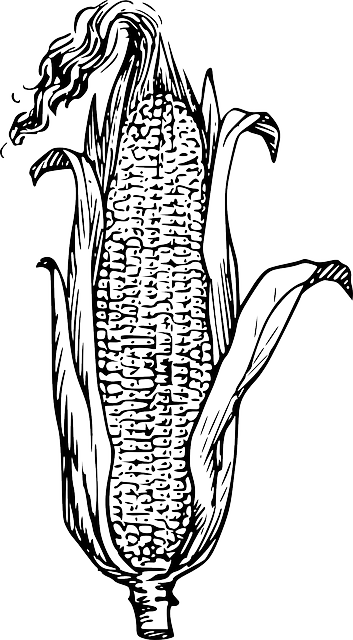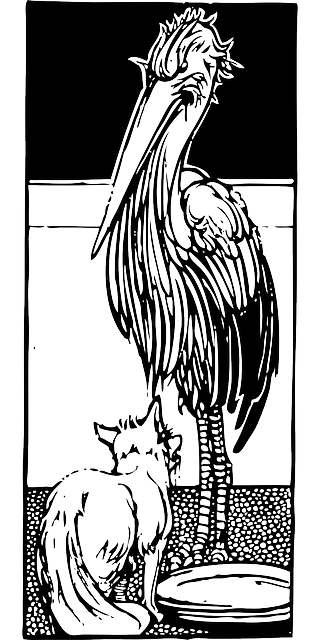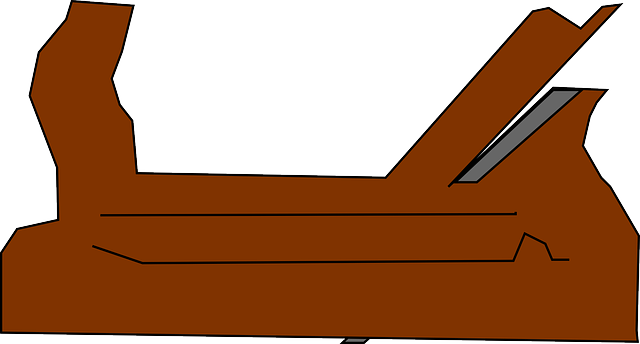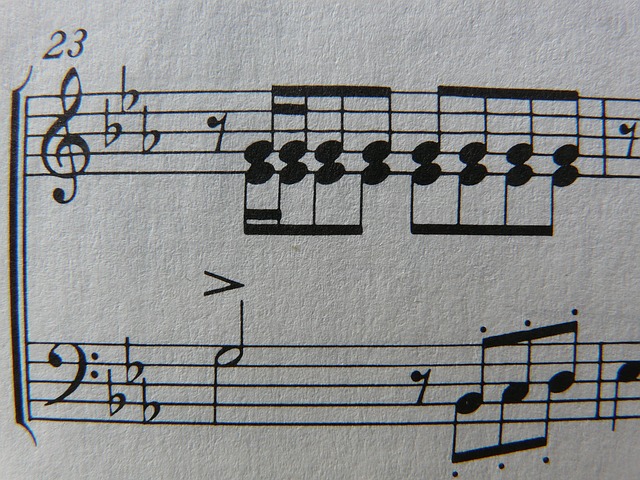الديناميكا اللونية الكمية
| النموذج العياري لفيزياء الجسيمات |
|---|
|
الجسيمات الأولية في النموذج العياري
|
|
خلفية
فيزياء الجسيمات
نظرية الحقل الكمومي نظرية القياس كسر التناظر التلقائي آلية هيگز |
|
أسس
تآثر كهروضعيف
ديناميكا لونية كمومية مصفوفة س.ك.م |
|
تقيدات
خرق تناظر الشحنة السوية القوي
معضلة الهرمية تذبذب النيوترينو |
|
فهماء
رذرفورد • تومسون • تشادويك • سودارشان • ستوني • مارشاك • أندرسون • فاينمان • روبيا • گل-مان • ساكاتا • پاول • گلاشو • مير • زڤايج • إليوپولوس • مياني • كوان • نامبو • هان • تشمبرلين • كابيبو • شوارتز • پرل • Majorana • واينبرگ • لي • عبدالسلام • كوباياشي • ماسكاوا • يانگ • يوكاوا • أت هوفت • ڤلتمان • گروس • پوليتسر • ويلتشك
|
في الفيزياء النظرية، الديناميكا اللونية الكمية quantum chromodynamics (QCD) is a theory of the strong interaction (color force), a fundamental force describing the interactions between quarks and gluons which make up hadrons (such as the proton, neutron or pion). It is the study of the (3) Yang–Mills theory of color-charged fermions (the quarks). QCD is a quantum field theory of a special kind called a non-abelian gauge theory, consisting of a 'color field' mediated by a set of exchange particles (the gluons). The theory is an important part of the Standard Model of particle physics. A huge body of experimental evidence for QCD has been gathered over the years.
QCD enjoys two peculiar properties:
- Confinement, which means that the force between quarks does not diminish as they are separated. Because of this, it would take an infinite amount of energy to separate two quarks; they are forever bound into hadrons such as the proton and the neutron. Although analytically unproven, confinement is widely believed to be true because it explains the consistent failure of free quark searches, and it is easy to demonstrate in lattice QCD.
- Asymptotic freedom, which means that in very high-energy reactions, quarks and gluons interact very weakly. This prediction of QCD was first discovered in the early 1970s by David Politzer and by Frank Wilczek and David Gross. For this work they were awarded the 2004 Nobel Prize in Physics.
There is no known phase-transition line separating these two properties; confinement is dominant in low-energy scales but, as energy increases, asymptotic freedom becomes dominant.
المصطلحات
The word quark was coined by American physicist Murray Gell-Mann (و. 1929) in its present sense. It originally comes from the phrase "Three quarks for Muster Mark" in Finnegans Wake by James Joyce. On June 27, 1978, Gell-Mann wrote a private letter to the editor of the Oxford English Dictionary, in which he related that he had been influenced by Joyce's words: "The allusion to three quarks seemed perfect." (Originally, only three quarks had been discovered.) Gell-Mann, however, wanted to pronounce the word with (ô) not (ä), as Joyce seemed to indicate by rhyming words in the vicinity such as Mark. Gell-Mann got around that "by supposing that one ingredient of the line 'Three quarks for Muster Mark' was a cry of 'Three quarts for Mister . . . ' heard in H.C. Earwicker's pub," a plausible suggestion given the complex punning in Joyce's novel.
التاريخ
With the invention of bubble chambers and spark chambers in the 1950s, experimental particle physics discovered a large and ever-growing number of particles called hadrons. It seemed that such a large number of particles could not all be fundamental. First, the particles were classified by charge and isospin by Eugene Wigner and Werner Heisenberg; then, in 1953, according to strangeness by Murray Gell-Mann and Kazuhiko Nishijima. To gain greater insight, the hadrons were sorted into groups having similar properties and masses using the eightfold way, invented in 1961 by Gell-Mann and Yuval Ne'eman. Gell-Mann and George Zweig, correcting an earlier approach of Shoichi Sakata, went on to propose in 1963 that the structure of the groups could be explained by the existence of three flavors of smaller particles inside the hadrons: the quarks.
Perhaps the first remark that quarks should possess an additional quantum number was made as a short footnote in the preprint of Boris Struminsky in connection with Ω-hyperon composed of three strange quarks with parallel spins (this situation was peculiar, because since quarks are fermions, such combination is forbidden by the Pauli exclusion principle):
Three identical quarks cannot form an antisymmetric S-state. In order to realize an antisymmetric orbital S-state, it is necessary for the quark to have an additional quantum number.
— B. V. Struminsky, Magnetic moments of barions in the quark model, JINR-Preprint P-1939, Dubna, Submitted on January 7, 1965
Boris Struminsky was a PhD student of Nikolay Bogolyubov. The problem considered in this preprint was suggested by Nikolay Bogolyubov, who advised Boris Struminsky in this research. In the beginning of 1965, Nikolay Bogolyubov, Boris Struminsky and Albert Tavchelidze wrote a preprint with a more detailed discussion of the additional quark quantum degree of freedom. This work was also presented by Albert Tavchelidze without obtaining consent of his collaborators for doing so at an international conference in Trieste (إيطاليا), in May 1965.
A similar mysterious situation was with the baryon; in the quark model, it is composed of three up quarks with parallel spins. In 1965, Moo-Young Han with Yoichiro Nambu and Oscar W. Greenberg independently resolved the problem by proposing that quarks possess an additional (3) gauge degree of freedom, later called color charge. Han and Nambu noted that quarks might interact via an octet of vector gauge bosons: the gluons.
Since free quark searches consistently failed to turn up any evidence for the new particles, and because an elementary particle back then was defined as a particle which could be separated and isolated, Gell-Mann often said that quarks were merely convenient mathematical constructs, not real particles. The meaning of this statement was usually clear in context: He meant quarks are confined, but he also was implying that the strong interactions could probably not be fully described by quantum field theory.
Richard Feynman argued that high energy experiments showed quarks are real particles: he called them partons (since they were parts of hadrons). By particles, Feynman meant objects which travel along paths, elementary particles in a field theory.
The difference between Feynman's and Gell-Mann's approaches reflected a deep split in the theoretical physics community. Feynman thought the quarks have a distribution of position or momentum, like any other particle, and he (correctly) believed that the diffusion of parton momentum explained diffractive scattering. Although Gell-Mann believed that certain quark charges could be localized, he was open to the possibility that the quarks themselves could not be localized because space and time break down. This was the more radical approach of S-matrix theory.
James Bjorken proposed that pointlike partons would imply certain relations should hold in deep inelastic scattering of electrons and protons, which were spectacularly verified in experiments at SLAC in 1969. This led physicists to abandon the S-matrix approach for the strong interactions.
The discovery of asymptotic freedom in the strong interactions by David Gross, David Politzer and Frank Wilczek allowed physicists to make precise predictions of the results of many high energy experiments using the quantum field theory technique of perturbation theory. Evidence of gluons was discovered in three jet events at PETRA in 1979. These experiments became more and more precise, culminating in the verification of perturbative QCD at the level of a few percent at the LEP in CERN.
The other side of asymptotic freedom is confinement. Since the force between color charges does not decrease with distance, it is believed that quarks and gluons can never be liberated from hadrons. This aspect of the theory is verified within lattice QCD computations, but is not mathematically proven. One of the Millennium Prize Problems announced by the Clay Mathematics Institute requires a claimant to produce such a proof. Other aspects of non-perturbative QCD are the exploration of phases of quark matter, including the quark-gluon plasma.
The relation between the short-distance particle limit and the confining long-distance limit is one of the topics recently explored using string theory, the modern form of S-matrix theory.
النظرية
- Confinement: the equations of QCD remain unsolved at energy scales relevant for describing atomic nuclei. How does QCD give rise to the physics of nuclei and nuclear constituents?
- Quark matter: the equations of QCD predict that a plasma (or soup) of quarks and gluons should be formed at high temperature and density. What are the properties of this phase of matter?
بعض التعريفات
Every field theory of particle physics is based on certain symmetries of nature whose existence is deduced from observations. These can be
- local symmetries, that is the symmetry acts independently at each point in space-time. Each such symmetry is the basis of a gauge theory and requires the introduction of its own gauge bosons.
- global symmetries, which are symmetries whose operations must be simultaneously applied to all points of space-time.
QCD is a gauge theory of the (3) gauge group obtained by taking the color charge to define a local symmetry.
Since the strong interaction does not discriminate between different flavors of quark, QCD has approximate flavor symmetry, which is broken by the differing masses of the quarks.
There are additional global symmetries whose definitions require the notion of chirality, discrimination between left and right-handed. If the spin of a particle has a positive projection on its direction of motion then it is called left-handed; otherwise, it is right-handed. Chirality and handedness are not the same, but become approximately equivalent at high energies.
- Chiral symmetries involve independent transformations of these two types of particle.
- Vector symmetries (also called diagonal symmetries) mean the same transformation is applied on the two chiralities.
- Axial symmetries are those in which one transformation is applied on left-handed particles and the inverse on the right-handed particles.
ملاحظات اضافية: الثنائية
As mentioned, asymptotic freedom means that at large energy - this corresponds also to short distances - there is practically no interaction between the particles. This is in contrast - more precisely one would say dual - to what one is used to, since usually one connects the absence of interactions with large distances. However, as already mentioned in the original paper of Franz Wegner, a solid state theorist who introduced 1971 simple gauge invariant lattice models, the high-temperature behaviour of the original model, e.g. the strong decay of correlations at large distances, corresponds to the low-temperature behaviour of the (usually ordered!) dual model, namely the asymptotic decay of non-trivial correlations, e.g. short-range deviations from almost perfect arrangements, for short distances. Here, in contrast to Wegner, we have only the dual model, which is that one described in this article.
مجموعات التماثل
اللاگرانجية
The dynamics of the quarks and gluons are controlled by the quantum chromodynamics Lagrangian. The gauge invariant QCD Lagrangian is
where
The symbol
where fabc are the structure constants of SU(3). Note that the rules to move-up or pull-down the a, b, or c indexes are trivial, (+......+), so that fabc = fabc = fabc whereas for the μ or ν indexes one has the non-trivial relativistic rules, corresponding e.g. to the signature (+---). Furthermore, for mathematicians, according to this formula the gluon color field can be represented by a SU(3)-Lie algebra-valued "curvature"-2-form
The constants m and g control the quark mass and coupling constants of the theory, subject to renormalization in the full quantum theory.
An important theoretical notion concerning the final term of the above Lagrangian is the Wilson loop variable. This loop variable plays a most-important role in discretized forms of the QCD (see lattice QCD), and more generally, it distinguishes confined and deconfined states of a gauge theory. It was introduced by the Nobel prize winner Kenneth G. Wilson and is treated in a separate article.
الحقول
Quarks are massive spin-1/2 fermions which carry a color charge whose gauging is the content of QCD. Quarks are represented by Dirac fields in the fundamental representation 3 of the gauge group (3). They also carry electric charge (either -1/3 or 2/3) and participate in weak interactions as part of weak isospin doublets. They carry global quantum numbers including the baryon number, which is 1/3 for each quark, hypercharge and one of the flavor quantum numbers.
Gluons are spin-1 bosons which also carry color charges, since they lie in the adjoint representation 8 of SU(3). They have no electric charge, do not participate in the weak interactions, and have no flavor. They lie in the singlet representation 1 of all these symmetry groups.
Every quark has its own antiquark. The charge of each antiquark is exactly the opposite of the corresponding quark.
الديناميكا
According to the rules of quantum field theory, and the associated Feynman diagrams, the above theory gives rise to three basic interactions: a quark may emit (or absorb) a gluon, a gluon may emit (or absorb) a gluon, and two gluons may directly interact. This contrasts with QED, in which only the first kind of interaction occurs, since photons have no charge. Diagrams involving Faddeev–Popov ghosts must be considered too (except in the unitarity gauge).
قانون المساحة وconfinement
Detailed computations with the above-mentioned Lagrangian show that the effective potential between a quark and its anti-quark in a meson contains a term , which represents some kind of "stiffness" of the interaction between the particle and its anti-particle at large distances, similar to the entropic elasticity of a rubber band (see below). This leads to confinement of the quarks to the interior of hadrons, i.e. mesons and nucleons, with typical radii Rc, corresponding to former "Bag models" of the hadrons . The order of magnitude of the "bag radius" is 1 fm (=10−15 m). Moreover, the above-mentioned stiffness is quantitatively related to the so-called "area law" behaviour of the expectation value of the Wilson loop product PW of the ordered coupling constants around a closed loop W; i.e. is proportional to the area enclosed by the loop. For this behaviour the non-abelian behaviour of the gauge group is essential.
الوسائل
Further analysis of the content of the theory is complicated. Various techniques have been developed to work with QCD. Some of them are discussed briefly below.
Perturbative QCD
This approach is based on asymptotic freedom, which allows perturbation theory to be used accurately in experiments performed at very high energies. Although limited in scope, this approach has resulted in the most precise tests of QCD to date.
QCD العقدية
Among non-perturbative approaches to QCD, the most well established one is lattice QCD. This approach uses a discrete set of space-time points (called the lattice) to reduce the analytically intractable path integrals of the continuum theory to a very difficult numerical computation which is then carried out on supercomputers like the QCDOC which was constructed for precisely this purpose. While it is a slow and resource-intensive approach, it has wide applicability, giving insight into parts of the theory inaccessible by other means, in particular into the explicit forces acting between quarks and antiquarks in a meson. However, the numerical sign problem makes it difficult to use lattice methods to study QCD at high density and low temperature (e.g. nuclear matter or the interior of neutron stars).
1/N expansion
A well-known approximation scheme, the 1/N expansion, starts from the premise that the number of colors is infinite, and makes a series of corrections to account for the fact that it is not. Until now, it has been the source of qualitative insight rather than a method for quantitative predictions. Modern variants include the AdS/CFT approach.
النظريات الفعالة
For specific problems effective theories may be written down which give qualitatively correct results in certain limits. In the best of cases, these may then be obtained as systematic expansions in some parameter of the QCD Lagrangian. One such effective field theory is chiral perturbation theory or ChiPT, which is the QCD effective theory at low energies. More precisely, it is a low energy expansion based on the spontaneous chiral symmetry breaking of QCD, which is an exact symmetry when quark masses are equal to zero, but for the u,d and s quark, which have small mass, it is still a good approximate symmetry. Depending on the number of quarks which are treated as light, one uses either SU(2) ChiPT or SU(3) ChiPT . Other effective theories are heavy quark effective theory (which expands around heavy quark mass near infinity), and soft-collinear effective theory (which expands around large ratios of energy scales). In addition to effective theories, models like the Nambu-Jona-Lasinio model and the chiral model are often used when discussing general features.
قواعد الجمع في QCD
Based on an Operator product expansion one can derive sets of relations that connect different observables with each other.
نموذج نامبو-جونا-لازينيو
In one of his recent works, Kei-Ichi Kondo derived as a low-energy limit of QCD, a theory linked to the Nambu-Jona-Lasinio model since it is basically a particular non-local version of the نموذج پولياكوڤ-نامبو-الديناميكا_اللونية_الكمية. The later being in its local version, nothing but the Nambu-Jona-Lasinio model in which one has included the Polyakov loop effect, in order to describe a 'certain confinement'.
The Nambu-Jona-Lasinio model in itself is, among many other things, used because it is a 'relatively simple' model of chiral symmetry breaking, phenomenon present up to certain conditions (Chiral limit i.e. massless fermions) in QCD itself.
اختبارات تجريبية
The notion of quark flavors was prompted by the necessity of explaining the properties of hadrons during the development of the quark model. The notion of color was necessitated by the puzzle of the Δ++. This has been dealt with in the section on the history of QCD.
The first evidence for quarks as real constituent elements of hadrons was obtained in deep inelastic scattering experiments at SLAC. The first evidence for gluons came in three jet events at PETRA.
Several good quantitative tests of perturbative QCD exist:
- The running of the QCD coupling as deduced from many observations
- Scaling violation in polarized and unpolarized deep inelastic scattering
- Vector boson production at colliders (this includes the Drell-Yan process)
- Jet cross sections in colliders
- Event shape observables at the LEP
- Heavy-quark production in colliders
Quantitative tests of non-perturbative QCD are fewer, because the predictions are harder to make. The best is probably the running of the QCD coupling as probed through lattice computations of heavy-quarkonium spectra. There is a recent claim about the mass of the heavy meson Bc[4]. Other non-perturbative tests are currently at the level of 5% at best. Continuing work on masses and form factors of hadrons and their weak matrix elements are promising candidates for future quantitative tests. The whole subject of quark matter and the quark-gluon plasma is a non-perturbative test bed for QCD which still remains to be properly exploited.
علاقات رابطة مع فيزياء الحالة الصلبة
There are unexpected cross-relations to solid state physics. For example, the notion of gauge invariance forms the basis of the well-known Mattis spin glasses, which are systems with the usual spin degrees of freedom for i =1,...,N, with the special fixed "random" couplings Here the εi and εk quantities can independently and "randomly" take the values ±1, which corresponds to a most-simple gauge transformation This means that thermodynamic expectation values of measurable quantities, e.g. of the energy are invariant.
However, here the coupling degrees of freedom
For positive J0 the thermodynamics of the Mattis spin glass corresponds in fact simply to a "ferromagnet in disguise", just because these systems have no "frustration“ at all. This term is a basic measure in spin glass theory. Quantitatively it is identical with the loop-product along a closed loop W. However, for a Mattis spin glass - in contrast to "genuine" spin glasses - the quantity PW never becomes negative.
The basic notion "frustration" of the spin-glass is actually similar to the Wilson loop quantity of the QCD. The only difference is again that in the QCD one is dealing with SU(3) matrices, and that one is dealing with a "fluctuating" quantity. Energetically, perfect absence of frustration should be non-favorable and atypical for a spin glass, which means that one should add the loop-product to the Hamiltonian, by some kind of term representing a "punishment". - In the QCD the Wilson loop is essential for the Lagrangian rightaway.
The relation between the QCD and "disordered magnetic systems" (the spin glasses belong to them) were additionally stressed in a paper by Fradkin, Huberman und Shenker, which also stresses the notion of duality.
A further analogy consists in the already mentioned similarity to polymer physics, where, analogously to Wilson Loops, so-called "entangled nets" appear, which are important for the formation of the entropy-elasticity (force proportional to the length) of a rubber band. The non-abelian character of the SU(3) corresponds thereby to the non-trivial "chemical links“, which glue different loop segments together, and "asymptotic freedom" means in the polymer analogy simply the fact that in the short-wave limit, i.e. for (where Rc is a characteristic correlation-length for the glued loops, corresponding to the above-mentioned "bag radius", while λw is the wavelength of an excitation) any non-trivial correlation vanishes totally, as if the system had crystallized.
There is also a correspondence between confinement in QCD - the fact that the color-field is only different from zero in the interior of hadrons - and the behaviour of the usual magnetic field in the theory of type-II superconductors: there the magnetism is confined to the interiour of the Abrikosov flux-line lattice, i.e., the London penetration depth λ of that theory is analogous to the confinement radius Rc of quantum chromodynamics. Mathematically, this correspondendence is supported by the second term, on the r.h.s. of the Lagrangian.
طالع أيضاً
- For overviews, see Standard Model, its field theoretical formulation, strong interactions, quarks and gluons, hadrons, confinement, QCD matter, or quark-gluon plasma.
- For details, see gauge theory, quantization procedure including BRST quantization and Faddeev–Popov ghosts. A more general category is quantum field theory.
- For techniques, see Lattice QCD, 1/N expansion, perturbative QCD, Soft-collinear effective theory, heavy quark effective theory, chiral models, and the Nambu and Jona-Lasinio model.
- For experiments, see quark search experiments, deep inelastic scattering, jet physics, quark-gluon plasma.
الهامش
- ^ Gell-Mann, Murray (1995). The Quark and the Jaguar. Owl Books. ISBN .
- ^ نطقب:Cite arxiv
- ^ B. V. Struminsky, Magnetic moments of barions in the quark model. JINR-Preprint P-1939, Dubna, Russia. Submitted on January 7, 1965.
- ^ N. Bogolubov, B. Struminsky, A. Tavkhelidze. On composite models in the theory of elementary particles. JINR Preprint D-1968, Dubna 1965.
- ^ A. Tavkhelidze. Proc. Seminar on High Energy Physics and Elementary Particles, Trieste, 1965, Vienna IAEA, 1965, p. 763.
- ^ V. A. Matveev and A. N. Tavkhelidze (INR, RAS, Moscow) The quantum number color, colored quarks and QCD (Dedicated to the 40th Anniversary of the Discovery of the Quantum Number Color). Report presented at the 99th Session of the JINR Scientific Council, Dubna, 19–20 January 2006.
- ^ J. Polchinski, M. Strassler (2002). "Hard Scattering and Gauge/String duality". Physical Review Letters. 88 (3): 31601. arXiv:hep-th/0109174. Bibcode:2002PhRvL..88c1601P. doi:10.1103/PhysRevLett.88.031601. PMID 11801052.
- ^ Brower, Richard C.; Mathur, Samir D.; Chung-I Tan (2000). "Glueball Spectrum for QCD from AdS Supergravity Duality". Nuclear Physics B. 587: 249–276. arXiv:hep-th/0003115. Bibcode:2000NuPhB.587..249B. doi:10.1016/S0550-3213(00)00435-1.
-
^ F. Wegner, Duality in Generalized Ising Models and Phase Transitions without Local Order Parameter, J. Math. Phys. 12 (1971) 2259-2272.
- Reprinted in Claudio Rebbi (ed.), Lattice Gauge Theories and Monte Carlo Simulations, World Scientific, Singapore (1983), p. 60-73. Abstract: [1]
- ^ Perhaps one can guess that in the "original" model mainly the quarks would fluctuate, whereas in the present one, the "dual" model, mainly the gluons do.
- ^ See all standard textbooks on the QCD, e.g., those noted above
- ^ Only at extremely large pressures and or temperatures, e.g. for
- ^ Kenneth A. Johnson, "The bag model of quark confinement", Scientific American, July 1979
- ^ M. Cardoso et al., "Lattice QCD computation of the colour fields for the static hybrid quark-gluon-antiquark system, and microscopic study of the Casimir scaling", Phys. Rev. D 81, 034504 (2010) ).
- ^ Kei-Ichi Kondo (2010). "Toward a first-principle derivation of confinement and chiral-symmetry-breaking crossover transitions in QCD". Physical Review D. 82 (6): 065024. arXiv:1005.0314v2. Bibcode:2010PhRvD..82f5024K. doi:10.1103/PhysRevD.82.065024.
- ^ D.C. Mattis, Phys. Lett. 56a (1976) 421
- ^ J. Vanninemus and G. Toulouse, J. Phys. Cعشرة (1977) 537
- ^ E. Fradkin, B.A. Huberman, S. Shenker, Gauge Symmetries in random magnetic systems, Phys. Rev. B 18 (1978) 4783-4794, [2]
- ^ A. Bergmann, A. Owen , "Dielectric relaxation spectroscopy of poly[(R)-3-Hydroxybutyrate] (PHD) during crystallization", Polymer International 53 (7) (2004) 863-868, [3]
- ^ Mathematically, the flux-line lattices are described by Emil Artin's braid group, which is nonabelian, since one braid can wind around another one.
للاستزادة
- Greiner, Walter;Schäfer, Andreas (1994). Quantum Chromodynamics. Springer. ISBN .CS1 maint: multiple names: authors list (link)
- Halzen, Francis; Martin, Alan (1984). Quarks & Leptons: An Introductory Course in Modern Particle Physics. John Wiley & Sons. ISBN .CS1 maint: multiple names: authors list (link)
- Creutz, Michael (1985). Quarks, Gluons and Lattices. Cambridge University Press. ISBN .
وصلات خارجية
- Particle data group
- The millennium prize for proving confinement
- Ab Initio Determination of Light Hadron Masses
- Andreas S Kronfeld The Weight of the World Is Quantum Chromodynamics
- Andreas S Kronfeld Quantum chromodynamics with advanced computing
- Standard model gets right answer
- Quantum Chromodynamics



























